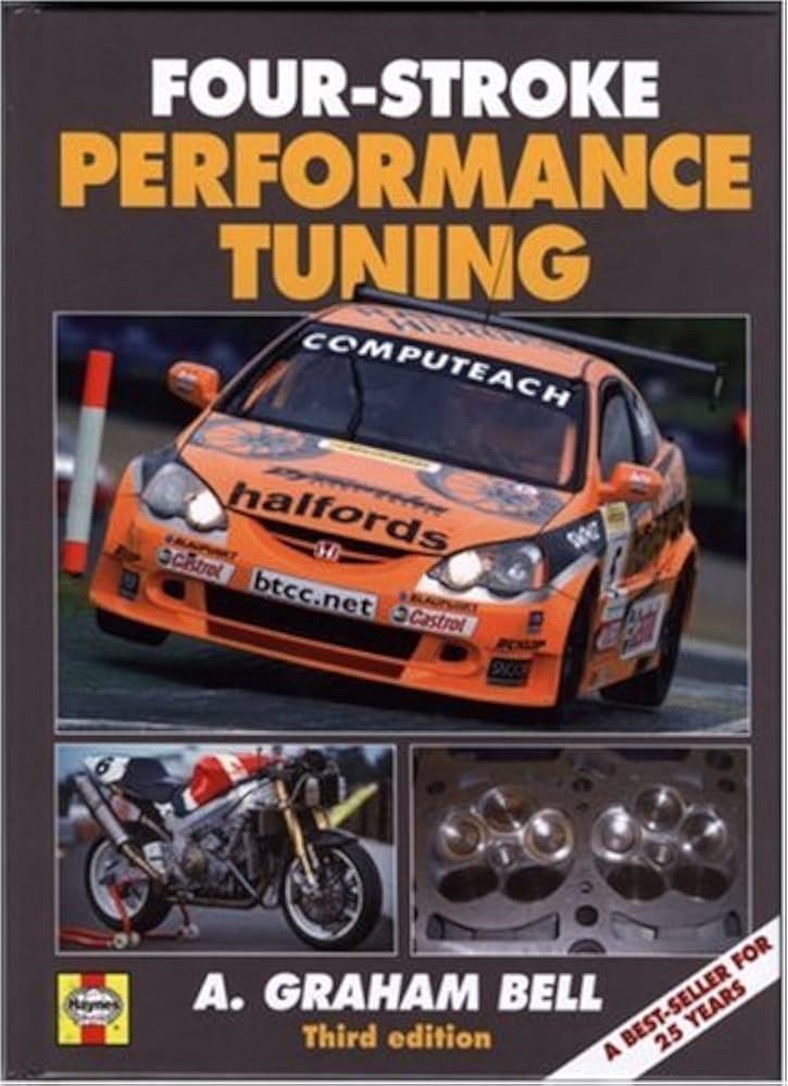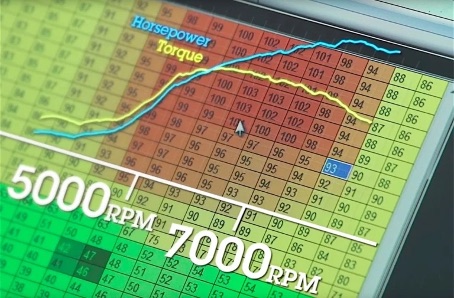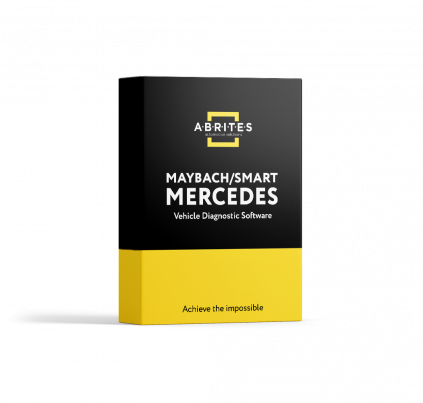
WHAT IS EFI (ELECTRONIC FUEL INJECTION) TUNING?
There have been so many articles, thousands of YouTube videos that attempt to explain how to tune an internal combustion engine and they go into so many details that it is easy to get lost in the sea of information before us. For this reason, we want to do a an article on the topic of engine tuning and explain the reality of it as simple as possible. As the saying goes - If you cannot explain something in a simple manner – you do not understand it well enough.
I. Basics

I have to revert back to the books I found on FTPs and torrent trackers as a kid. Modern Engine Tuning by A. Graham Bell for example- the actual bible on the subject. This is where you will see a phrase which later became a cliché: “Engines are just air pumps”. But it is true. The more air and fuel you pump in and manage to ignite – the bigger the bang, the more power. So, when we were kids our first job was to fit “performance” air filters and exhausts to our N/A engines and being blown away with the “incredible” results we had achieved. To be clear, we probably did something more than spend all our hard-earned carwash money on Ebay parts. In fact, we may have been onto something. More air in and out may really bring a bit of a gain for your car but we need to know that none of the hardware parts of the engine we replace will make sense without a tune.
But what is a “tune”?
Tuning (similar to what it means on a guitar) is the action of optimizing and organizing the existing hardware in the best way possible to achieve a certain goal – be it performance, longevity, fuel economy or cheating when the USA asks how much you are polluting.
II. Understanding tuning

From factory all the cars in the world come out with a pre-determined “tune”, a set of parameters installed in its engine control system which makes sure that the engine exists in a safe way until the warranty runs out, at least. These parameters that the manufacturer sets are very hard to achieve- they have to provide slightly more performance than the competitive model, consume slightly less fuel than it and not explode. The components of each tune are the maps – there is a fuel map, an ignition map, and (as most current vehicles are equipped with turbochargers) the boost map. Each of these maps aims to provide the optimal amount of burning of the fuel so that we can burn more of it at each combustion cycle and get the most safe power out of each set of strokes. As we learned in the past – the ideal stoichiometry is about 14.7:1, this means that for every 14.7 grams of fuel one gram of gasoline needs to be mixed, ignited and burned – everything with less fuel is lean, everything with more fuel is rich burning.
What does a “tuner” do?
The tuner’s purpose is to set your car up in such a way that you can make the most of the components inside and around your engine. For example – factory boost pressure of your turbocharger is mostly safe at around 0.7, 0.8 Bar of pressure (I must point out that one of our future blog posts will be about turbochargers) so just quickly. Boost is the pressure of the air coming into the engine which is over the 1 bar atmospheric pressure, so this means 0.7-0.8 over atmospheric pressure.
Your tuner looks at the hardware you currently have and sees that you have 0.7-0.8 bars of boost pressure. If they just raise your boost pressure your mixture will become lean, you will start detonating at the wrong point in time (knock) and you will eventually melt your pistons. If you are over- fueling your mixture, you will have tons of unburnt fuel which will seep through your piston rings into your oil, it will ruin its qualities and cause the crankshaft or connecting rod bearings to spin, thus causing catastrophic engine failure. Usually, the factory injectors of your engine work at around 60-70% capacity. Once the tuner determines the capacity the engine’s injectors use, they can increase it by having them open for longer and spraying more fuel, they also must modify the factory fuel pressure regulator to supply more fuel pressure to the injectors now forced to inject more fuel. This then puts a strain on the fuel pumps (modern engines have a low-pressure fuel pump from the fuel tank to the high pressure fuel pump near the engine). All of these factors and hardware components must be observed so that none of them is taking the load of the others. More fuel and air require a stronger spark in order to ignite it and it becomes a butterfly effect where a small change on one end can have a big impact on the other.
III. Volumetric Efficiency

If you are going to remember anything from my blog post about tuning – please let that be A. Graham Bell is our prophet and there is one more guy I need you to follow, he will explain all there is to explain in simple words because he understands what he is saying – Driving4Answers.
Here is his video on VE (volumetric efficiency) which he explained perfectly all there is to know about the subject to get started:
There are some small inaccuracies in what this gentleman says which can be disputed and discussed but in essence he is right there on point. VE is the future of engine tuning because it is the best way to modulate the engine’s load. Also – please see Matt and Scott at Haltech’s video on the matter as it is just as important:
Here is the gist of it really quickly – cars which have MAP (manifold absolute pressure) sensors allow you to measure the amount of air pressure inside the intake manifold. If it is lower than atmospheric pressure – there is vacuum, if it is higher then we have boost. The VE map allows you to change any value on two axes – One is the MAP (where 0.0) is atmospheric pressure and the other is RPM of the engine and the blocks inside the VE map tell us at what percentage of successful stoichiometric burn you have (e.g. 75 means 75% of the volume of the cylinders are burning). This is why when we go over zero we have numbers higher than 100? – Exactly – turbo and super chargers are magical devices, allowing us to burn more efficiently than just with air. More on them next time.
IV. Common misconceptions
1. OTS maps
This is something extremely common today – a tuner has one really good map for let’s say 2.0TDI for Audi which is quite efficient and does not really smoke a lot, has a good 15-20% power bump, relatively safe and economical. The tuner then proceeds to apply this very map to every single one of his customers who comes in with a 2.0 TDI. This is Off The Shelf (OTS) mapping. There is a problem with that – one 2.0 TDI has 300.000 km and the other has 120.000 they are not similarly worn, they do not operate in the same conditions. This is why at the very least – a tuner must read the existing maps, then take his OTS maps and compare them at the very least to see the points in which they may compensate for engine wear and overall condition.
2. Tunes fix things
They do not. Every engine must be in perfect running condition the moment you decide to tune it. Everything else is patchwork.
3. You need a dyno
You do not really – dynamometers or dynos are there to simulate road conditions in a safe environment. This is the best possible way to see how the vehicle operates under different conditions so that you can maximize the gains but there have been many legendary tuners who never owned a dyno and do exclusively road tunes.
4. OTA maps are not good enough.
Not true – many tuners work online, they gather logs from your driving, make modifications, send them back and try again. Over The Air tuning is a thing and it works. Just approach the tuning process with your brain.
5. The tuner broke my car.
Speaking of brain – talk to the tuner, have him look around, drive the car. Think, analyze. Decide together. Otherwise, you will break your own car and there will be no one else to blame but yourself.
6. One of the best tools for reading and writing the data containing the maps from modern ECUs is the Abrites Engine Control Unit Programming tool.
It turns your factory ECU into a standalone you can tune yourself. Just do not break your car and come crying to me. THIS IS NOT A GUIDE.
Alek
 TCU Personalization Without FBS4 Data
TCU Personalization Without FBS4 Data
 BDC2 Replacement and Mileage Reset for BMW
BDC2 Replacement and Mileage Reset for BMW